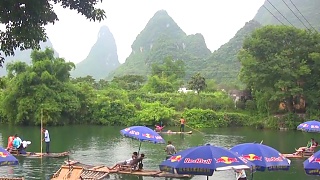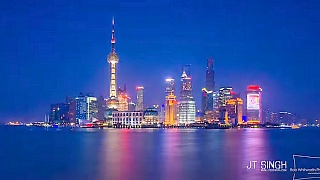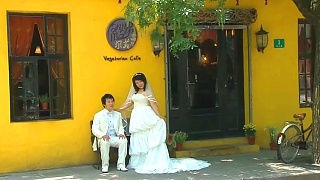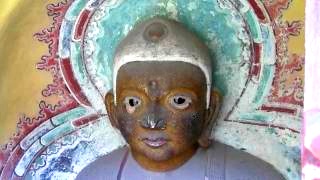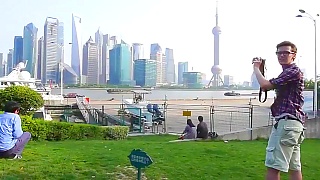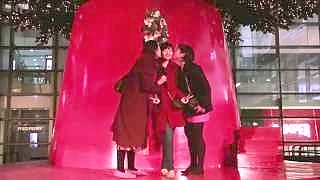With Wei's Travel ...
[640],shadow=true,start=,stop=The French Concession in Shanghai is a place that condenses a century of history in modern Shanghai. It is the largest and most prosperous concession among the four concessions in old China. It was handed back to the Republic of China government in 1943, renamed the Eighth District.
The French Concession in Shanghai was opened in 1849, experienced a slight expansion in 1900, and began to expand significantly in 1914 to establish the New French Concession. The French Concession maintained a high degree of independence in old Shanghai. The entire French Concession in Shanghai was the most high-end residential area in old Shanghai, and the architectural style can be said to be uniform. The reason why the Indigo tree is called French plane tree in China is also because it was first introduced by the French and planted in the French Concession in Shanghai.
Shanghai's reputation as the "Paris of the East" is also named after the French Concession. Its architectural style is independent of the public concession and the Chinese border, and is almost the same as Paris thousands of miles away. The French had always maintained great control over the French Concession.
00:00 Highlights 精彩预览
01:40 ZIKAWEI Shopping Area 徐家汇商圈
04:22 Hengshan Lane 衡山坊
09:53 Xujiahui Park 徐家汇公园
22:07 EMI Building 百代小楼
25:10 Hengshan Boulevard 衡山路
27:29 Lipo Garden 丽波花园
31:08 Gaoan Garden 高安花园
33:57 Yongping Lane 永平里
38:52 No.8 Hengshan Avenue 衡山路8号园区
48:03 Hengshan Boulevard North Part 衡山路北段
50:32 Shanghai Symphony Orchestra 上海交响乐团
53:58 Clemen Apartment 克莱门公寓
58:31 Urumqi Middle Road 乌鲁木齐中路
01:07:58 Anfu Road 安福路
01:20:44 Wiggle Wiggle Flagship Store
01:29:36 Wukang Road 武康路
01:38:28 Ferguson Lane 武康庭
01:47:41 Wukang Building 武康大楼
01:52:03 CITE BOURGOGNE 步高里
01:54:57 Ruijin Hotel 瑞金宾馆
02:06:34 Yongkang Road 永康路
02:12:45 ICCF Garden 之禾卡纷花园
02:16:28 Shanghai Conservatory of Music 上海音乐学院
02:23:05 Old Downtown Highlights 梧桐街区精华
Shanghai is one of China's most dynamic and cosmopolitan cities, blending a rich history with modern skyscrapers and vibrant culture. Here's what you need to know as a tourist visiting Shanghai:
Historical and Cultural Landmarks:
The Bund: This iconic waterfront promenade along the Huangpu River features colonial-era buildings on one side and futuristic skyscrapers on the other, offering stunning views of Shanghai's skyline.
Yu Garden: Dating back to the Ming dynasty, Yu Garden is a classical Chinese garden with pavilions, ponds, and rockeries. The nearby Yu Garden Bazaar is a great place to shop for souvenirs and traditional crafts.
Shanghai Museum: Home to an extensive collection of Chinese art and artifacts, including bronzes, ceramics, paintings, and calligraphy, the Shanghai Museum is a must-visit for history and art enthusiasts.
Jing'an Temple: One of Shanghai's most famous Buddhist temples, Jing'an Temple is known for its beautiful architecture, peaceful atmosphere, and towering golden Buddha statue.
Modern Attractions:
Shanghai Tower: Ascend to the observation deck of this iconic skyscraper, the tallest in China and the second-tallest in the world, for panoramic views of the city.
The Oriental Pearl TV Tower: Another iconic landmark, this futuristic tower offers observation decks, a glass-bottomed skywalk, and a revolving restaurant.
Shanghai Disneyland: Located in the Pudong district, Shanghai Disneyland offers a magical experience for visitors of all ages with its themed lands, attractions, and entertainment.
Shopping and Entertainment:
Nanjing Road: One of the world's busiest shopping streets, Nanjing Road is lined with department stores, boutiques, and restaurants. Don't miss the nearby pedestrian-friendly Nanjing Road East, known for its lively atmosphere and street performers.
Xintiandi: This upscale shopping, dining, and entertainment district features a mix of traditional Shikumen-style buildings and modern amenities, making it a popular destination for locals and tourists alike.
French Concession: Explore this historic neighborhood known for its tree-lined streets, charming cafes, boutiques, and art galleries.
Culinary Delights:
Shanghai Cuisine: Sample local specialties such as xiaolongbao (soup dumplings), shengjianbao (pan-fried dumplings), and Shanghai-style noodles.
Street Food: Wander through the city's bustling food markets and snack streets to taste a variety of street foods, from savory pancakes to grilled skewers.
Practical Tips:
Transportation: Shanghai has an efficient public transportation system, including the subway, buses, and taxis. Consider purchasing a rechargeable transportation card for convenience.
Language: While Mandarin is the official language, English is widely spoken in tourist areas, hotels, and restaurants.
Weather: Shanghai experiences four distinct seasons, with hot, humid summers and chilly winters. The best times to visit are spring (March to May) and autumn (September to November) when the weather is mild and comfortable.
Etiquette: Respect local customs and traditions, such as using polite language and avoiding loud behavior in public places.
Shanghai offers a captivating blend of old and new, with its historic landmarks, modern skyscrapers, vibrant culture, and delectable cuisine. Whether you're interested in history, architecture, shopping, or dining, Shanghai has something to offer every type of visitor.
 ‘Paris of the East’ in beautiful ShangHai
‘Paris of the East’ in beautiful ShangHai

